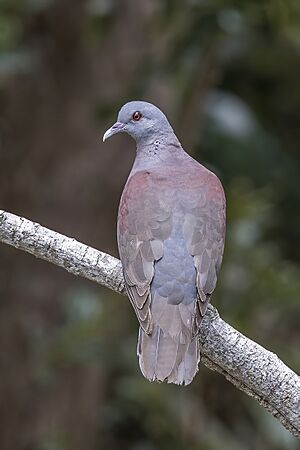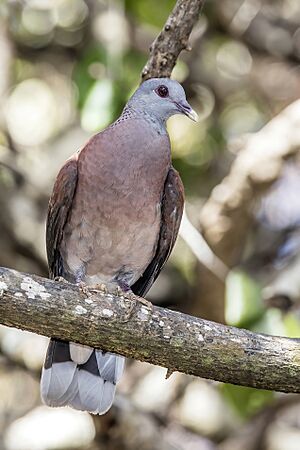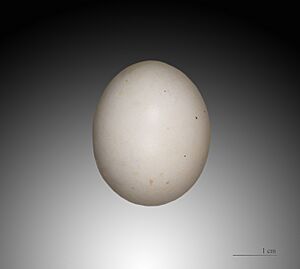Malagasy turtle dove facts for kids
Quick facts for kids Malagasy turtle dove |
|
|---|---|
 |
|
 |
|
| both in Mauritius | |
| Conservation status | |
| Scientific classification | |
| Genus: |
Nesoenas
|
| Species: |
picturatus
|
| Synonyms | |
|
Columba picturata (Temminck, 1813) |
|
The Malagasy turtle dove, also known as the Madagascar turtle dove (its scientific name is Nesoenas picturatus), is a type of bird. It belongs to the pigeon and dove family, called Columbidae. You can find this dove in several places around the Indian Ocean. These include the Comoros, Madagascar, Mauritius, Mayotte, Réunion, and the Seychelles. It also lives in the Mauritian-Indian Ocean Territory.
Understanding Malagasy Turtle Dove Types
This bird has different types, known as subspecies. Subspecies are groups within a species that look a bit different or live in different areas. They can still breed with each other.
For a while, people thought the Rodrigues pigeon was a subspecies of the Malagasy turtle dove. However, the Rodrigues pigeon is now extinct. Scientists today agree it was a completely separate species.
Family Tree of the Malagasy Turtle Dove
The closest living relative to the Malagasy turtle dove is the pink pigeon (Nesoenas mayeri). These two birds are special because they form their own group. They are different from other common pigeons (Columba) and typical turtle doves (Streptopelia).
Scientists have decided to place the Malagasy turtle dove and the pink pigeon in their own genus called Nesoenas. A genus is a group of closely related species. This helps show how unique these two doves are compared to other pigeons and doves.
How Malagasy Turtle Doves Are Doing
Even though some groups of Malagasy turtle doves on certain islands are rare, the species as a whole is doing well. The IUCN (International Union for Conservation of Nature) keeps track of how many animals are left in the wild. They consider the Malagasy turtle dove a species of least concern. This means there are plenty of them around, and they are not currently at risk of disappearing.



